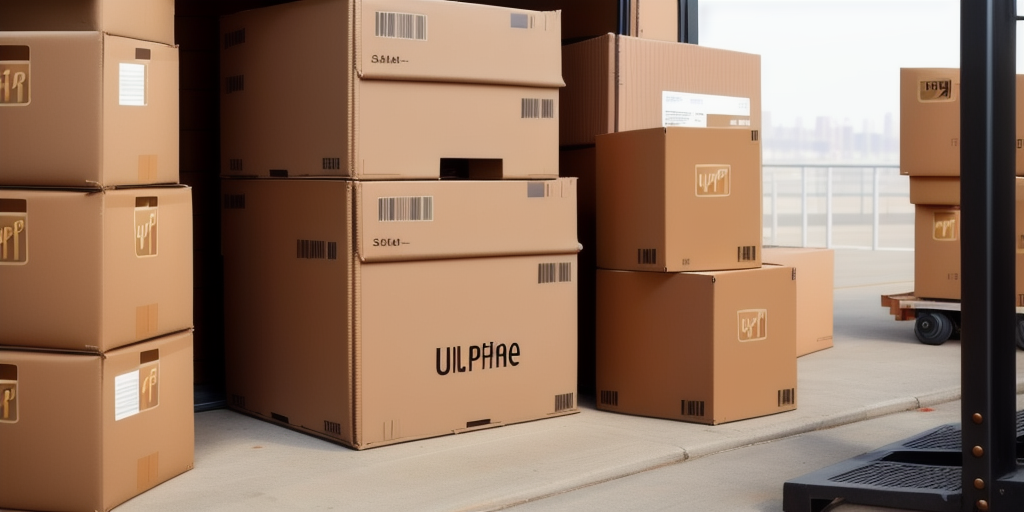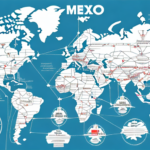Understanding the Different Shipping Rates of UPS
When it comes to shipping, businesses need to choose the right shipping provider and method to ensure that their products are delivered on time and in good condition. UPS is one of the most popular shipping providers in the market, known for its efficient and reliable service. However, shipping rates can vary depending on the service level, package weight, dimensions, and destination. In this guide, we will explore the different shipping rates of UPS, factors that affect your shipping rates, and tips for saving money on shipping costs.
How to Choose the Best Shipping Rate for Your Business Needs
Before shipping your products with UPS, it is crucial to understand your shipping needs and choose the best shipping rate for your business. UPS offers a wide range of shipping services, including air, ground, and freight shipping. Each service level has its own pricing calculation, delivery time, and weight/size restrictions. It is essential to evaluate your shipping needs, destination, and budget to determine which service level works best for you.
When choosing a shipping rate, it is also important to consider the type of product you are shipping. Fragile or perishable items may require special handling or faster delivery, which can affect the shipping rate. Additionally, some shipping services may offer insurance or tracking options that can provide added security and peace of mind for both you and your customers.
Another factor to consider when choosing a shipping rate is the volume of your shipments. If you are shipping large quantities of products regularly, you may be able to negotiate better rates with your shipping provider. It is also worth exploring the option of using a third-party logistics provider, who can help you optimize your shipping strategy and potentially save you money on shipping costs.
An Overview of UPS Shipping Services
UPS offers several shipping services, including UPS Ground, UPS Next Day Air, UPS 2nd Day Air, UPS 3 Day Select, UPS Worldwide Express, and UPS Worldwide Economy.
UPS Ground is the most popular service, delivering packages within 1-5 business days within the United States. For faster delivery, businesses can opt for UPS Next Day Air, which guarantees delivery by the next business day.
UPS 2nd Day Air is another popular option for businesses that need their packages delivered within 2 business days. This service is ideal for time-sensitive shipments that are not urgent enough to require next-day delivery. UPS 3 Day Select is a cost-effective option for businesses that need their packages delivered within 3 business days. This service is ideal for non-urgent shipments that do not require expedited delivery.
Factors That Affect Your Shipping Rates
- Package Weight and Dimensions: Heavier packages or those with irregular dimensions incur higher shipping costs.
- Destination: The distance between the origin and destination affects the shipping rate, with longer distances typically costing more.
- Service Type: Faster services like air shipping are more expensive than ground shipping.
- Additional Fees: Fuel surcharges, delivery area surcharges, insurance, and special handling can add to the overall cost.
- Volume Discounts: Businesses that ship frequently or in large volumes may qualify for discounted rates.
Additionally, UPS offers tools and resources to help customers estimate shipping costs and find the most cost-effective shipping options for their needs. For more detailed information, refer to the official UPS services page.
How to Negotiate Better Shipping Rates with UPS
Businesses can negotiate better shipping rates with UPS by:
- Building a Good Relationship: Establishing a strong relationship with your UPS account manager can lead to more favorable rates.
- Consolidating Shipments: Combining multiple shipments can reduce overall costs.
- Optimizing Packaging: Using the right packaging can minimize weight and dimensions, lowering shipping costs.
Additionally, businesses can leverage UPS shipping tools and programs to access discounts, such as the CampusShip program and the UPS SurePost service, which collaborates with the United States Postal Service for cost-effective lightweight shipments.
Being aware of your shipping volume and frequency allows you to provide UPS with accurate and consistent shipping data, which can be used to negotiate better rates and discounts.
Understanding the Differences between Air, Ground, and Freight Shipping
UPS offers air, ground, and freight shipping services, each with its own pricing, delivery time, and weight/size restrictions:
- Air Shipping: Faster but more expensive, ideal for perishable items or time-sensitive documents. Services include UPS Next Day Air, UPS 2nd Day Air, and UPS 3 Day Select.
- Ground Shipping: Most cost-effective for domestic shipments, suitable for non-urgent items. Services include UPS Ground, UPS 3 Day Select, and UPS SurePost.
- Freight Shipping: Best for large and heavy items, offering tailored solutions based on the shipment's requirements.
Choosing the right shipping service depends on your budget and specific shipping needs. For more details, visit the UPS Freight Services page.
Tips for Saving Money on UPS Shipping Costs
- Use UPS Packaging Supplies: Utilizing UPS-provided packaging can sometimes reduce costs and ensure packages meet UPS standards.
- Consolidate Shipments: Combining multiple orders into a single shipment can lower overall shipping expenses.
- Choose the Right Shipping Service: Select the most cost-effective service that meets your delivery requirements.
- Optimize Packaging Dimensions: Accurate measurement and efficient packaging can prevent additional fees for oversized packages.
- Leverage Shipping Tools: Use UPS’s rate comparison tools and discount programs to find the best deals.
Additionally, businesses can explore UPS's prepaid shipping options to lock in lower rates and manage shipping costs more effectively. Considering alternative shipping methods, such as regional carriers or ground shipping, can also lead to significant savings.
Using eco-friendly packaging materials not only supports sustainability but can also reduce shipping costs by lowering the package's weight.
How to Track Your UPS Shipments and Manage Your Deliveries
UPS provides several tools for businesses to track their shipments and manage deliveries efficiently:
- UPS Tracking: Allows businesses to monitor the status of their packages in real-time.
- UPS My Choice: Enables customization of deliveries, package rerouting, and receipt of notifications.
- Pickup Options: Includes scheduled pickups and convenient drop-off locations to streamline the shipping process.
For more information, visit the UPS Tracking and UPS My Choice pages.
The Benefits of Using UPS for International Shipping
UPS is a popular choice for international shipping due to its extensive global network, reliable service, and expertise in customs clearance. The company offers several international shipping services, including UPS Worldwide Express, UPS Worldwide Saver, and UPS Worldwide Expedited. With UPS, businesses can ship their products to over 220 countries and territories worldwide and benefit from customs clearance assistance and trade management tools.
Leveraging UPS's global infrastructure ensures timely deliveries and compliance with international shipping regulations. For detailed information, refer to the UPS International Shipping services page.
Comparing UPS Shipping Rates to Other Major Carriers
When choosing a shipping provider, it is essential to compare rates and services to find the best option for your business needs. UPS is known for its competitive rates and reliable service, but other major carriers such as FedEx and USPS also offer shipping services with their own pricing structures.
Consider factors such as delivery time, package weight, destination, and additional services when comparing shipping rates. Utilizing comparison tools like the Shipping Rate Comparison can help businesses make informed decisions.
How to Use UPS Shipping Tools and Resources to Optimize Your Business
UPS provides several tools and resources to help businesses optimize their shipping operations, including:
- UPS Developer Kit: Allows businesses to integrate UPS shipping functionalities into their own systems.
- UPS TradeAbility: Provides trade compliance information and tools for international shipping.
- CampusShip: Designed for e-commerce businesses to manage and streamline shipping processes.
- UPS WorldShip: A shipping software solution that automates the shipping process for businesses.
By utilizing these tools, businesses can automate their shipping processes, access trade compliance information, and manage their shipping costs more effectively. Visit the UPS Technology Services page for more details.
Common Mistakes to Avoid When Shipping with UPS
While UPS is a reliable and efficient shipping provider, businesses can make mistakes that lead to extra costs or delivery delays. Common mistakes include:
- Incorrect Package Dimensions: Mismeasuring packages can result in additional fees for oversized shipments.
- Insufficient Packaging: Poorly packaged items are more likely to be damaged during transit.
- Addressing Errors: Incorrect or incomplete addresses can cause delivery delays or returns.
- Missing Shipping Documentation: Necessary customs forms or shipping labels must be accurately completed.
To avoid these mistakes, businesses should follow UPS's shipping guidelines and utilize UPS's resources and tools to optimize their shipping operations.
Understanding the Impact of Package Dimensions and Weight on Your Rates
Package dimensions and weight are crucial factors that affect your UPS shipping rates. Shipping costs can increase if packages exceed size or weight restrictions or require additional handling or special fees. To avoid extra costs:
- Accurate Measurement and Weighing: Ensure that all packages are measured and weighed precisely before shipping.
- Suitable Packaging Materials: Use packaging that protects the item while minimizing size and weight.
- Appropriate Shipping Service: Select a shipping service level that aligns with your package's size and weight.
By managing these factors effectively, businesses can optimize their shipping costs. For more information, visit the UPS Shipping Resources.
How to Calculate Your Estimated Shipping Costs with UPS
To calculate your estimated shipping costs with UPS, businesses can use the UPS Shipping Calculator. This tool takes into account your package weight, dimensions, destination, and shipping service to provide an estimate based on UPS's published rates.
However, keep in mind that actual shipping costs may differ due to factors such as fuel surcharges, delivery area surcharges, and additional fees. For the most accurate estimate, refer to the UPS Rate Calculator on the official UPS website.
The Future of UPS: New Technologies and Innovations in Shipping
As a leader in the shipping industry, UPS is continually investing in new technologies and innovations to improve its service and sustainability. These technologies include:
- Autonomous Delivery Vehicles: Exploring the use of self-driving vehicles to enhance delivery efficiency.
- Drones: Implementing drone technology for faster and more flexible deliveries, especially in hard-to-reach areas.
- Renewable Energy-Powered Delivery Hubs: Developing eco-friendly facilities to reduce the environmental impact of shipping operations.
With these developments, UPS aims to offer faster and safer deliveries while reducing its environmental footprint. For more insights into UPS’s innovations, visit the UPS Sustainability page.
Overall, understanding the different shipping rates of UPS is essential for businesses to optimize their shipping operations and save costs. By choosing the right shipping service, negotiating better rates, and using UPS's shipping tools and resources, businesses can streamline their shipping operations, improve their efficiency, and boost their bottom line.




















